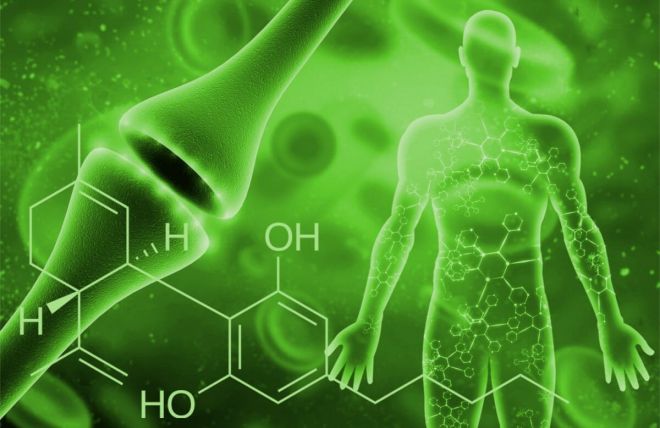The Potential of Wearable Sweat Bands for Thermoregulation in Amyotrophic Lateral Sclerosis (ALS): A Hypothesis
Abstract:
Amyotrophic Lateral Sclerosis (ALS) is a progressive neurodegenerative disease causing motor neuron dysfunction, often leading to autonomic nervous system impairment, including difficulties in thermoregulation. Fluctuating body temperatures can significantly impact the quality of life for individuals with ALS, leading to discomfort, fatigue, and exacerbation of other symptoms. This paper proposes a hypothesis that wearing sweat bands on both wrists can offer a simple, non-invasive method for modulating body temperature and alleviating thermal discomfort in individuals with ALS. We explore the underlying physiological rationale, examine the existing literature on related applications, and discuss the potential benefits, limitations, and future research directions for investigating this intervention.
1. Introduction:
Amyotrophic Lateral Sclerosis (ALS), also known as Lou Gehrig's disease, is a devastating neurological disorder characterized by the progressive degeneration of motor neurons in the brain and spinal cord. While primarily recognized for its impact on voluntary muscle control, ALS can also affect the autonomic nervous system, leading to a range of non-motor symptoms. One such symptom is impaired thermoregulation, where individuals with ALS experience an increased sensitivity to ambient temperature fluctuations and difficulties maintaining a stable core body temperature. This can manifest as excessive sweating, flushing, chills, and overall thermal discomfort.
Disrupted thermoregulation significantly impacts the well-being of individuals with ALS. It can lead to fatigue, weakness, increased spasticity, sleep disturbances, and even exacerbate other symptoms. Currently, management strategies primarily involve adjusting room temperature, using fans or blankets, and wearing appropriate clothing. These strategies are often reactive and may not be consistently effective.
This paper proposes a novel, proactive approach to thermoregulation in ALS: the use of wearable sweat bands on both wrists. We hypothesize that strategically applying cool or warm water to these sweat bands can leverage the physiological principles of heat exchange at the wrist to modulate core body temperature and alleviate thermal discomfort.
2. Physiological Rationale:
The wrist is a key location for heat exchange due to its unique anatomical features:
- Proximity of Superficial Arteries and Veins: The radial and ulnar arteries and veins run close to the surface of the skin at the wrist. This allows for efficient heat transfer between the bloodstream and the external environment.
- Sparse Insulation: The wrist has relatively little subcutaneous fat compared to other areas of the body, facilitating heat loss or gain.
- Strategic Location on the Distal Extremity: The wrist is positioned on the distal extremity, allowing for rapid cooling or warming of the blood before it returns to the core circulation.
By applying cool water to the sweat bands, heat from the blood flowing through the superficial vessels at the wrist is drawn away, leading to a cooling effect throughout the body. Conversely, applying warm water to the sweat bands can transfer heat into the bloodstream, raising the core body temperature.
This method leverages the body's natural thermoregulatory mechanisms. The hypothalamus, the body's thermostat, constantly monitors core body temperature. When it detects a deviation from the set point, it initiates physiological responses such as sweating, shivering, and vasodilation/vasoconstriction to restore thermal balance. While the autonomic nervous system may be impaired in ALS, these basic physiological responses continue to operate to some extent. By subtly modulating the temperature at the wrist, we can potentially assist the hypothalamus in maintaining a stable core body temperature and reducing thermal discomfort.
3. Supporting Evidence and Related Applications:
While there is limited research specifically examining the use of wrist-worn sweat bands for thermoregulation in ALS, several studies support the underlying principles:
- Cooling and Athletic Performance: Numerous studies have demonstrated the effectiveness of cooling techniques, including ice packs applied to the wrists, in improving athletic performance and reducing heat strain during exercise. These studies highlight the rapid heat transfer capabilities of the wrist.
- Warming and Cold Sensitivity: Evidence suggests that warming the wrists can alleviate symptoms of cold sensitivity, such as Raynaud's phenomenon.
- Temperature Modulation in Anesthesia: Controlled cooling of the wrist has been used in anesthesia to induce mild hypothermia for neuroprotective purposes.
These examples demonstrate the potential of targeted temperature modulation at the wrist to influence core body temperature and physiological responses.
4. Potential Benefits and Advantages:
The use of sweat bands for thermoregulation in ALS offers several potential benefits:
- Simplicity and Affordability: Sweat bands are readily available, inexpensive, and easy to use.
- Non-Invasive: The intervention is entirely non-invasive and does not require any medical procedures or specialized equipment.
- Convenience and Portability: Sweat bands can be worn discreetly and used virtually anywhere.
- Personalization: The temperature of the water applied to the sweat bands can be adjusted to individual preferences and needs.
- Potential for Symptom Management: Alleviating thermal discomfort can improve overall quality of life, reduce fatigue, and potentially mitigate other symptoms associated with ALS.
5. Limitations and Challenges:
Despite the potential benefits, there are limitations and challenges that need to be considered:
- Individual Variability: The effectiveness of this intervention may vary significantly depending on individual factors such as disease severity, autonomic nervous system function, and body composition.
- Subjective Perception: The perception of thermal comfort is highly subjective, making it difficult to objectively assess the effectiveness of the intervention.
- Potential for Overcooling or Overheating: Care must be taken to avoid excessive cooling or warming, which could lead to unintended physiological consequences.
- Lack of Empirical Evidence: There is currently no published research specifically examining the use of sweat bands for thermoregulation in ALS.
6. Future Research Directions:
To fully evaluate the potential of sweat bands for thermoregulation in ALS, further research is needed:
- Pilot Studies: Conduct small-scale pilot studies to assess the feasibility, safety, and preliminary efficacy of using sweat bands with varying water temperatures in individuals with ALS.
- Controlled Clinical Trials: Design randomized controlled trials to compare the effectiveness of sweat bands to standard care in reducing thermal discomfort and improving quality of life.
- Physiological Monitoring: Use physiological monitoring devices, such as core body temperature sensors and skin conductance sensors, to objectively assess the impact of sweat bands on thermoregulation.
- Qualitative Research: Conduct qualitative interviews to explore the subjective experiences of individuals with ALS using sweat bands and identify potential barriers and facilitators to implementation.
- Development of Smart Sweat Bands: Explore the development of "smart" sweat bands with integrated temperature sensors and automated temperature control mechanisms.
7. Conclusion:
Fluctuating body temperature can significantly impact the quality of life for individuals with ALS. While further research is needed to validate its efficacy, the use of sweat bands on both wrists represents a promising, simple, and non-invasive strategy for potentially modulating body temperature and alleviating thermal discomfort in this population. By leveraging the physiological principles of heat exchange at the wrist, this intervention could offer a valuable tool for improving the overall well-being of individuals living with ALS. Future research should focus on evaluating the feasibility, safety, and efficacy of this approach through rigorous clinical trials and physiological monitoring.






